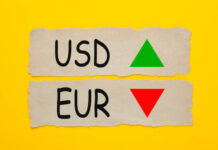Financial markets had the chance to reassess some of the great expectations that have underlined the asset price rally since Mid-March. Wall Street endured a torrid session with stocks and energy having their worst sessions in a couple of weeks. Chief amongst the fears, was the rapid increase in Covid-19 cases across the Southern states of the United States. If readers recall, the lackadaisical approach managing the pandemic by many states now at the epicentre of the current wave had been a concern for me. Highlighted by the thousands of Florida residents crammed cheek by jowl onto a bridge to watch the Space-X launch.
What has really spooked investors, is talk emerging from that area of the US, of new or reimposed shutdowns. I fear that the libertarian views of much of the populace though, will make such a solution challenging. Saving people from themselves is a philosophical conundrum Western democracy have yet to fully solve. Other states are now proposing compulsory self-isolation for travellers from the epicentre areas. More concerning for the US, is that this is not even the dreaded “second wave” of infections, merely an ongoing evolution of the first one.
The harsh dose of Covid-19 reality capped a lousy night for the US, and by association, world markets. The Trump administration, fresh from chopping US visa availability, proposed fresh tariffs on an array of European goods, and tariffs on Chinese lobsters. The Défense Department also published a list of Chinese companies with uncomfortably close ties to the Chinese military. Meaning international companies may find doing business with them challenging in the future. Trade disagreements and tensions being precisely what the world does not need right now.
Canada lost its coveted AAA credit rating with Fitch overnight. Its rating lowered by one notch to AA+ over concerns about government finances. They will surely not be the last though.
Elsewhere Covid-19 cases continued appearing in New Zealand, Australia, Germany, China, Japan and South Korea, where the outbreaks had supposedly been contained. The Australian clusters in Victoria being particularly concerning, involving as they do, community and not imported transmission. Anyone heavily invested in airlines on “travel-bubble” hopes, should probably reign in that enthusiasm.
Great expectations of a v-shaped recovery that alongside central bank monetary largesse, is one of the engine rooms powering the global recovery rally in asset markets these past three months. Those same expectations that Covid-19 in the developed world had done its worst must also be re-examined. Trade issues, and the propensity of the US White House to engage in populist policies, can no longer be dismissed either. The further that President Trump fall s behind in the polls, the more likely they are to increase.
The overnight price action has introduced some welcome two-way price volatility into a previously one-way market. That dose of reality is a thankful development. The longer, the gnomes of Wall Street felt that buying everything was a 100% certainty to untold riches had gone on, the harder the eventual correction would have been. The price of investments can rise or fall says the usual disclaimer on just about any financial product anywhere, and so is.
Investors should not panic overtly at this stage, however. The central pillar of the buy everything rally, the worlds’ central banks, and notably, the Federal Reserve, have still got your back via monetary policy. Those same central banks are buying everything with you. There has been a massive amount of fitting facts to the narrative going on overnight. Most of these facts are unchanged. They were wholly ignored by financial markets until last night, as they did not fit the price action or the narrative the buy-everything herd wanted to see.
Covid-19 still can undo the work of the tsunami of fiscal and monetary policy easings of the past few months. But it is far too early to call that yet. The negativity sweeping financial markets looks more like a welcome correction to the great expectations of one-way certainty for now, as opposed to a structural change in outlook. In a nutshell, the world is long everything, and momentum has stalled, not reversed.
Asian equities fall but show resilience.
Wall Street has been extremely overbought for some time, and a correction was long overdue. That came overnight as the Nasdaq fell 2.20%, the S&P 500 fell 2.60%, and the Dow Jones fell by 2.70%. In the scale of recent gains though, the overnight price action is a mere flesh wound.
Despite the handwringing of the world’s great and good and the financial press, that the end of days is upon us, Asian stock markets are remarkably resilient. Stock markets across the region are lower, but not apocalyptically so. That may reflect Asia’s reluctance in recent times, to slavishly follow the V-shaped herd’s optimism in North America.
The Nikkei 225 is 1.50% lower, with the Kospi down 2.0%. The Australian ASX 200 is down 1.70% with the All Ordinaries 1.20% lower. Chinese Mainland markets are modestly higher today, having refused to fully buy into the previous day’s rallies around the world. The Shanghai Composite is 0.30% higher, and the CSI 300 is up 0.40%.
Elsewhere in Asia, the falls have been modest. Singapore and Jakarta are down 1.0%, with Hong Kong and Kuala Lumpur down only 0.50%.
US stock index futures are marginally lower today, which is adding some support to regional markets. Having moved aggressively lower overnight, that should set European stocks up for a modest rebound in a few hours. Overall the price action is suggestive of a long-overdue bull market correction.
US Dollar rebounds on risk aversions.
The US Dollar staged an energetic session overnight, rallying across the board versus major and developing market currencies. Much of those flows were likely haven related, with the price action hinting that some deeper corrections to recent winners could be on the cards. The dollar index rose by 0.54% to 97.17.
The Australian and New Zealand Dollars endured the most torrid evening, being proxies for world growth and amongst the largest beneficiaries of the rotation out of US Dollars. The AUD/USD fell 0.90% to 0.6870. Only a loss of 0.6800 at this stage, would imply a more drawn-out correction is upon us. The NZD/USD looks more vulnerable, though. NZD/USD fell 1.20% to 0.6420 overnight, helped by a dovish Reserve Bank of New Zealand. It has critical support nearby at 0.6385, and a daily close below opens up a much deeper correction for the Kiwi.
The offshore Chinese Yuan remains a picture of calm after successive stronger fixings by its onshore equivalent in recent times. USD/CNH has risen to 7.0870 today but is still comfortably within the June trading range between 7.0400 and 7.1000. Overall, it appears that Chinese authorities are determined to maintain China markets as a bastion of calm, despite the volatility internationally.
Currency markets are quiet in Asia, with regional and major currencies almost unchanged from the New York session. That stability is probably due to the limited fallout in stock markets, but also because US real yields are negative across the curve to 30-years. That underlying fact should mean that Asian currencies are well placed to weather any storms from stock and energy market corrections.
Oil stabilises in Asia after a torrid New York session.
Oil prices tumbled overnight, as Covid-19 fears along with a very long short-term market, conspired to undermine confidence. Much noise was made about the modest rise by 1.4 million barrels in US crude inventories driving prices lower. That, however, is just bad timing, coming as it did, just as price momentum had stalled in recent days, with a speculative market very long near the highs. Markets had previously ignored much higher inventory numbers in recent times when momentum was strong. In other words, the facts have been fitted to the narrative the market wanted to see.
Brent crude tumbled by 5.90% to $40.20 a barrel, and WTI retreated by 6.10% to $37.95 a barrel. In Asia though, oil has stabilised somewhat, both contracts lower by 25 cents to $39.95 and $37.70 a barrel respectively. Only a modest fallout on Asian equity markets is helping oil prices today. There also appears to be plenty of physical buyers in the region, happy to scoop up oil on dips.
Brent crude has significant support at $37.50 a barrel, its 100-day moving average and June lows. WTI has support at its June lows around $34.50 a barrel. With the speculative market heavily long, some welcome two-ay risk is a welcome and necessary development. As long as both contracts remain above those support levels, the sell-off is merely an aggressive dose of trading reality, and not a structural turn in outlook.
Gold weathers the sell-off storm.
Gold has clung onto its recent gains by the skin of its teeth overnight. Having tested $1780.00 an ounce, it sank 17 Dollar to close at $1763.00, wilting as investors rush to cash in other asset classes, spilt over into long gold positioning as well.
That said, in recent times, similar scenarios have seen much steeper drops in gold, and the fact that it finished almost unchanged overnight, is a positive outcome. Negative real interest rates across the US yield curve are clearly supportive of gold, and any short-term correction is likely to be a slow grind lower, and not a rush for the exit doors.
Gold’s price action remains constructive, although today’s stock market correction may delay its long-awaited test of the long-term resistance at $1800.00. That level is formidable, and although the outlook for gold is positive, it will have to find new drivers of momentum to break it.
Gold is unchanged in early Asian trading; its direction will be dictated by how far Asian stock markets choose to follow Wall Street lower. Gold has initial support at $1760.00 an ounce and should find plenty of willing buyers on any fall towards the key $1745.00 an ounce level.












